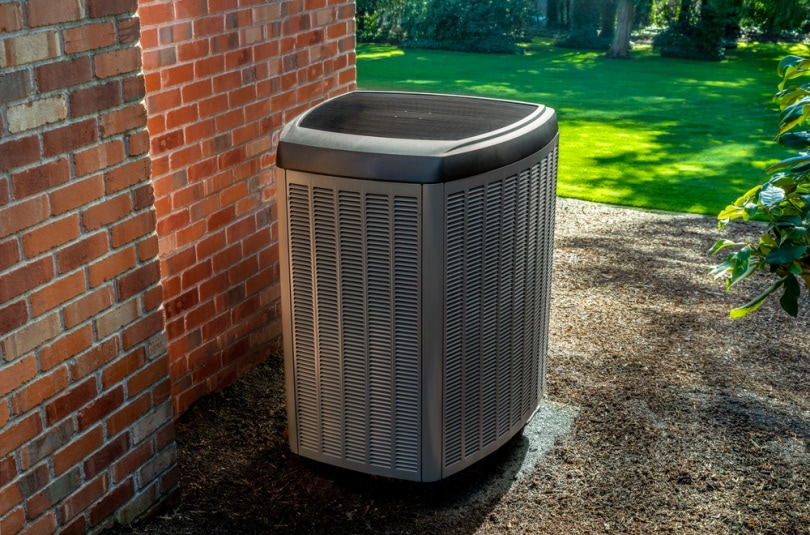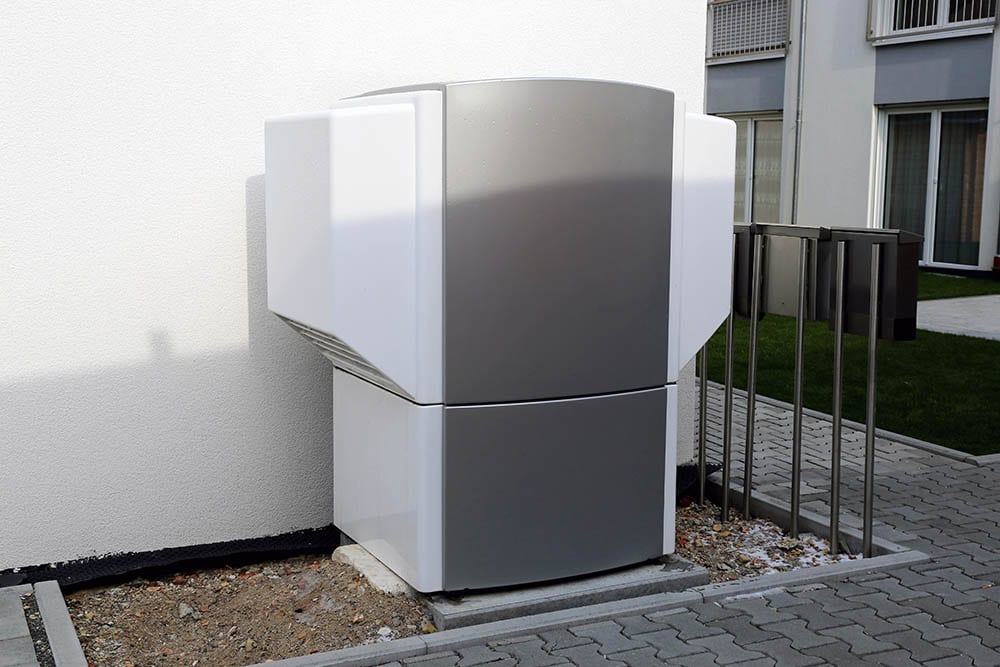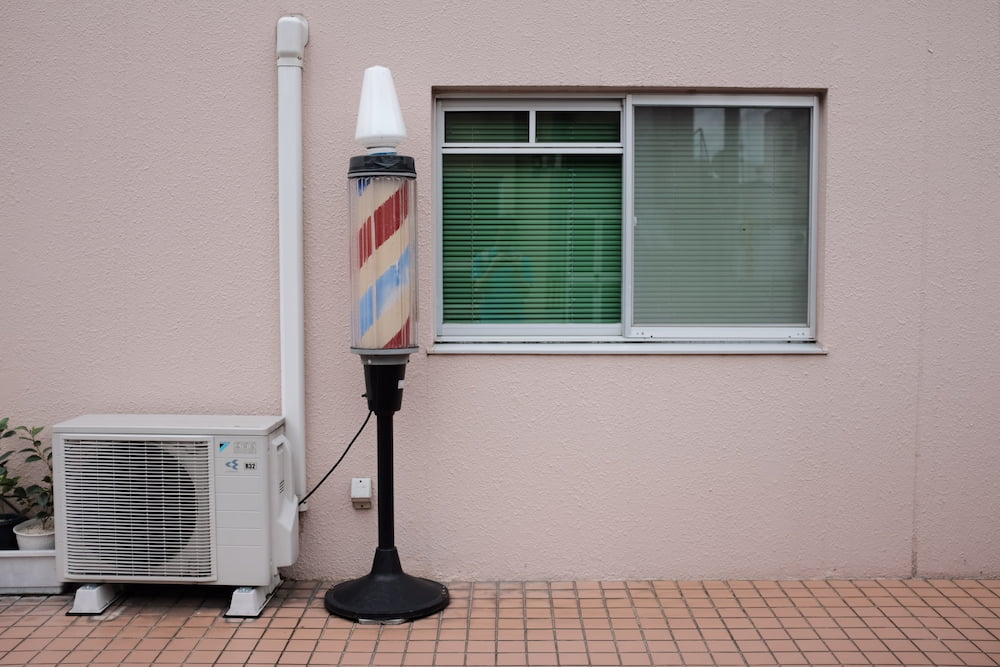How to Defrost a Heat Pump: 3 Simple Steps
-
Pete Ortiz
- Last updated:

A heat pump is quite a valuable addition to a home. It is a more efficient option for heating and cooling in terms of energy usage. Heat pumps play a vital role in taking the outside air and moving it indoors to keep you warm in the winter and cool in the summer.
However, there are still some things you should know about heat pumps before you buy one. For instance, knowing how to defrost a heat pump can save you time and money. It’ll also prolong the life of your unit.
Here are some quick and easy steps for defrosting a heat pump. But first, what causes ice accumulation on a heat pump?
Causes of Ice Buildup on a Heat Pump
Most heat pumps are designed to operate in a wide range of outdoor temperatures, but when the outdoor temperature drops below 40°F, ice can accumulate on the coils of the pump.
In a nutshell, ice buildup is usually caused by condensation. The heat pump cools the air coming into the house from the outside. Then, it releases moisture, which turns into droplets of water that freeze when they hit the cold coils of the heat pump system.
When this happens, ice will build upon the outside coil. It can damage the compressor and other parts sensitive to moisture or corrosion. If you notice ice forming on your unit’s coils during cold weather, it’s time to defrost it.
The 3 Steps on How to Defrost a Heat Pump
Defrosting your heat pump is a crucial maintenance task if you live in a warm climate. You should defrost your heat pump regularly.Here are steps you can take to defrost your heat pump:
1. Inspect the Heat Pump Coils for Ice Accumulation
The first step in any heat pump defrosting process is to check the coils for ice accumulation. The location and frequency of this inspection depend on the temperature outside.
Ensure you check your heat pump daily during winter or when the temperatures fall below 32°F.
A heat pump that operates well may have a thin coat of frost in winter. Don’t worry about that—it’s normal. However, if you notice ice buildup on the coils, you’ll have to defrost them.
Ice accumulation on the heat pump’s evaporator coil can block warm air from reaching your home. Also, it can cause the condenser fan motor to run continuously, reducing the efficiency of your unit.
2. Allow It to Defrost Itself
Your heat pump can defrost itself if it is covered with less than 1/16-inch ice. Heat pumps are equipped with a built-in defrosting component. With this, they can melt frost during winter every 30 minutes to 1.5 hours. Many heat pump designs will show if they’re in defrost mode.
The heat pump generates a loud whirring sound while defrosting. This way, you can tell if the defroster is operating. Keep in mind that this method will not work if large amounts of ice cover your heat pump’s condenser coils. It’s only applicable if there is thin ice present on the condenser coils.

3. Switch the Fan On to Engage the Defrost Function
Several heat pump designs cannot defrost when the fan is switched off. By switching the fan on, the heat pump allows hot liquid to pass through the pump compressor.
Usually, the fan is located on the side of the unit with a button or switch that will engage the defrost function. If you are not sure whether your heat pump has an auto defrost function, you can turn the fan on manually.
If you’re still unsure of where the fan is, you might not have a defrosting setting on your heat pump and should refer to your user’s manual. It will tell you whether the defrost function works when the fan is switched on. When the defrost function is operating, the fan will not blow air in your house until defrosting is completed. Skip this step if your heat pump can switch to defrost mode when the fan is off.
 Alternative Solutions to Defrost a Heat Pump
Alternative Solutions to Defrost a Heat Pump
Besides the steps above, you can use other methods to defrost your heat pump. Let’s look at some of them.
Move the Heat Pump’s Sensor
It may seem like an obvious solution, but sometimes people forget about this option. If the sensor on your heat pump is not working well, you may need to move it closer or further away from where it sits.
It will let you know when it needs to start defrosting itself. So, you won’t have any problems with frozen pipes or other issues related to ice build-up around your house.
The problem is that you have to move the sensor back and forth every time there is a frost buildup. This can be quite annoying and time-consuming if you have a large house.
Use Warm Water
If you have a garden hose with a sprayer attachment, this is an excellent way to defrost your unit. If not, pour a bucket of warm water over your unit’s coils until they’re clear.
If there’s still some ice on the coils after using the garden hose, let them sit for a few hours or overnight. Then, try again with warm water from the faucet.
It may take several attempts, but eventually, it will melt off all the ice so you can get your heat pump running again.

When to Call an HVAC Specialist
If you have tried everything and your heat pump is not defrosting, it may have a mechanical issue. So, it’s time to call in the professionals.
If you have an older model, it could be time for a replacement. An HVAC repair specialist can recommend replacing the unit or simply replacing some parts during routine maintenance.
How to Prevent Your Heat Pump from Freezing
Heat pumps are excellent for your home, but they have one drawback—they can freeze. If your heat pump is freezing, it’s not only an inconvenience, but it can be expensive and even dangerous. Fortunately, there are some things you can do to prevent your heat pump from freezing.
Keep It Clear of Debris
Being an outdoor unit, the heat pump needs regular cleaning to keep it clear of leaves, snow, and other rubble to prevent ice build-up on the fan blades and coils. This is the best way to prevent it from freezing so that it can maintain its efficiency.
If you wait until winter, it may be challenging to remove once it has formed. You should also make sure there are no obstructions near or around the unit that can prevent airflow.
Yearly Checkup and Maintenance
A heat pump should be checked at least once a year by an HVAC professional. The technician will examine all parts of your system and make any necessary repairs or replacements if needed.

Maintain Efficient Drainage Around the Heat Pump
Standing water can cause damage to the heat pump’s motor and other components due to corrosion and rusting.
To prevent this from happening, make sure all drainage holes are unblocked. This way, any excess water flows away from their base instead of building up around them.
Install the Right Capacity Heat Pump
Ensure that your heat pump has enough capacity to meet the heating needs of your house. This means ensuring that you have enough ductwork. You might also consider having piping installed in the walls and floors of your home.
If the pump doesn’t have enough capacity, the system won’t be able to keep up with the high demands during colder weather.

Conclusion
While it’s easy to get your heat pump up and running in most cases, the time it takes to defrost it can be a hassle. With a few simple steps and patience, defrosting is easy and fast.
Hopefully, this guide has helped end any lingering questions you may have on how to defrost a heat pump without affecting its functionality. However, do not hesitate to call in a professional if the problem is beyond what you can handle yourself.
Featured Image Credit: David Papazian, Shutterstock
Contents


 Alternative Solutions to Defrost a Heat Pump
Alternative Solutions to Defrost a Heat Pump